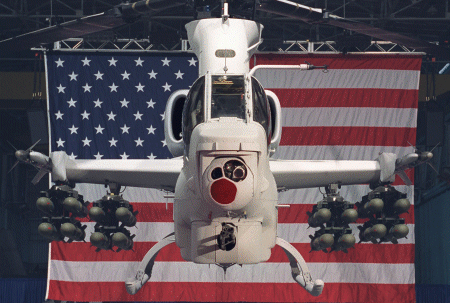Paul Lewis/WASHINGTON DC
The US Marine Corps (USMC) is planning a series of block enhancements for its fleet of Bell AH-1Z SuperCobras to keep the attack helicopter at the forefront of software, avionics and sensor advances.

Flight testing of the AH-1Zis to start in December, after roll out of the first re-manufactured machine on 20 November. With deliveries of 180 SuperCobras and 100 similarly upgraded UH-1Ys between 2004 and 2013, the USMC wants to ensure there is a pre-defined plan for inserting new technology.
"We have a plan for doing that and we'll start working the budget in 2004. It should be a block upgrade. We want to avoid making small changes that make it more difficult and expensive to maintain," says Capt Tom Curtis, H-1 programme manager. Future potential enhancements include new defensive aids such as the ITT ALQ-211 integrated radio-frequency countermeasures and infrared jammers.
The USMC is also keen to add a datalink to integrate it with the US Navy's network-centric architecture. "We're certainly very interested in putting a datalink in, but it's not currently in the programme funding. We want to take advantage of this and we're waiting for all the services, and the navy, in particular, to define what network-centric really means in terms of equipment," says Curtis.
The H-1's Litton integrated avionics suite is designed to accommodate "plug and play" advances in software. Curtis adds that the SuperCobra's new Lockheed Martin AAQ-30 Hawkeye Target Sight System (TSS) provides a "growth path for the next generation of precision guided missiles".
Lockheed Martin is trying to interest the USMC in fitting TSS to the UH-1Y, as well as offering it to Turkey for its planned King Cobra version of the AH-1Z. Turkey plans to use the indigenous Aselsan-built scanning forward looking infrared (FLIR) sensor. The mid-wave Hawkeye has a staring FLIR and target identification.
The AH-1Z has been shortlisted by Australia, Japan and South Korea and is being pushed in Slovenia. Bell has signed a letter of intent to team with Mitsubishi to compete in Japan after its traditional partner Fuji joined with Boeing to offer the AH-64D. The Japan Defence Agency is expected to issue a request for proposals by March for up to 100 AH-Xs.
Source: Flight International























